If the name Bongamsa sounds familiar it is because last year, on the Buddha's Birthday, I visited this esoteric temple tucked away in the mountains of Gyeongsangbuk-do. The temple is a meditative spot for the Jogye order (akin to Zen Buddhism) and closed to all but the Buddhist monks who train there. However, in honor of the Buddha every year the monks open the temple up to the public on his birthday (a public holiday here in Korea) and it quickly becomes crowded with throngs of ajummas and adjoshis wearing brightly colored hiking gear along with a few families and young couples. It's not a surprise that people flock to the temple on the one day that it is open - not only is it a relatively unique opportunity to explore an otherwise exclusive temple compound but it is also a strikingly beautiful temple with a backdrop of the towering mountains of central Korea. For the visitors who are there as devotees the main temple building which features a large statue of the Buddha is open and occasionally a monk a will be in there chanting the sutras. For the rest of the visitors the temple grounds are open to explore though there are some areas that are still off limit to visitors. As Buddhist temples do on the auspicious day of the Buddha's birthday the temple offers a small meal for visitors - a bowl of simple bibimbap (mixed vegetables, rice and gochujang, a spicy sweet pepper paste) and another bowl of seaweed soup. Below are a few pictures from a morning at the temple ~
0 Comments
 For the past year I've been eagerly counting down the time I have left in Korea and in late April it struck me - I only had a few months left. Suddenly I realized there were a few things I still wanted to do while here and so I created a "bucket list" of sorts with the things I want to do before I embark for the journey home. My bucket list isn't all that long - there are fewer than 10 items and I've started checking them off one by one. The top entry on my list was attending the Lotus Lantern Festival in Seoul in mid-May. This annual festival in honor of the Buddha, which I also attended last year, is held the weekend before the Buddha's birthday. I decided that I could easily knock a few items off my list and planned a weekend in Seoul doing a variety of activities. Lotus Lantern Festival The Lotus Lantern Festival, a bright and colorful celebration for the Buddha, is held in a central location of Seoul. Jogyesa, the headquarters for the Jogye order in Korea organizes the parade (which concludes at the temple) as well as other activities which are held on a closed strip of road which passes by the temple. Though it seems the festival has foundations in localized Buddhist traditions the Lotus Festival itself is relatively new only dating back a few years. Hundreds if not thousands of people participate in the parade - Buddhist monks from throughout Korea and the world, women dressed in hanbok (traditional dress), children from local schools and even foreigners. Most of the participants carry some type of lantern though others dance or play instruments. A few of the parade participants gave away their lanterns at the end of the parade and I was fortunate enough to be the recipient of one such lantern (they seemed to have favored children and foreigners). Below are a few photos of Jogyesa and the parade Sanchon Another item high on my bucket list was to enjoy another meal at a Buddhist restaurant. Since Baru, the restaurant across from Jogyesa, didn't have any open tables I walked over to Sanchon which is tucked back from the main road in Insadong. Sanchon is probably the most well known temple restaurant in Seoul, it was started by a former Buddhist monk and in the evenings there is a musical performance. Like Baru the restaurant is vegan and uses a variety of seasonal and fresh vegetables. The style of food of the two restaurants is reflected in their decor - Sanchon offers a more "traditional Korean experience" with large plants, hanging lotus lanterns and traditional items throughout the restaurant. The food follows suit and seemed to be more traditional Korean fare. On the other hand Baru is a more sleek and modern restaurant without any hint of traditional kitsch as is the food - the restaurant focuses on a modern gastronomical experience. Which restaurant a patron might prefer probably depends on the experience he or she is expecting - a modern take on temple food or something more traditional. Personally, I preferred Baru's dishes but I can see how Sanchon's atmosphere would appeal to the a visitor to Korea. Changdeokgung Palace After spending the night at a local hanok (traditional home) I arose early in the morning to visit the nearby Changdeokgung Palace, a former residence of Korean royalty. Seoul has a few different palaces, the most famous being Gyeongbokgung which I visited lasted year. Changdeokgung is best known for its gardens in which seasonal flowers bloom. Below are a few photos I took of the palace. After exploring the palace I headed to an outdoor market that specializes in organic food, most of which is vegan. I was able to enjoy a delicious lentil burger before heading back to the Lotus Lantern festival. The street in front of Jogyesa was closed off and there were a variety of booths on Korean culture and Buddhism both in Korea and other countries. I chatted for a couple of minutes with monks from Sri Lanka and Nepal before being blessed by them before beginning the long journey back to Jeomchon.
Early on in the month of May my school held its annual sports festival. These festivals are common place in Korean schools - often times they involve a series of athletic competitions (some serious, others rather silly). At my school the main event was the soccer tournament. The students also participated in a water balloon throwing contest, wrestling and a relay race. As with anything else in Korea the festival began with speeches from the principal, the P.E. teachers and for some reason me. Every once in awhile it strikes the fancy of the administration to have me give a random speech. I guess I should be thankful they asked me 10 minutes before I headed home the night before rather than the morning of the festival. However, they did tell me I could arrive at my usual time in the morning and I only happened to get to school early so I could work on a few lesson plans - a plan which was thwarted because the festival started 30 minutes earlier than I was told. Organization does not seem to be a virtue in Korean culture.
The biggest draw during the festival was the soccer match between the middle school soccer team and the high school soccer club (pictured above). I've mentioned in a previous post that the middle school is a training school for a local semi-professional soccer team. The boys, from the ages of 13-15 attend school from 9am-1pm and then train for the remainder of the day. I suspect their coach had high expectations for them so I think it took everyone by surprise when the high school club team easily beat them. Supposedly the loss was due to a few mishaps - the middle school players forgot their cleats (they practice in a different location) and their usual positions were switched up. Possibly it was done on purpose so the high school players, their seniors, wouldn't lose face. Either way it was an interesting match to watch and an enjoyable day outside.  May Day, a worldwide celebration of the worker has recently become a holiday for contract workers in Korea. Since native English teachers are employed as contract workers one of the perks is that we get the day off - and so I hopped on a bus and headed out to Saejae for Chasabal, the annual ceramics festival. I attended the festival last year which you can read about here. I thought it'd be a quiet day at the festival wondering around and snapping photos. However, the day didn't quite go as planned since while I was waiting for the bus I met Kylie, a Chinese woman on holiday from her job in Australia. She had been visiting a friend in Daejeon and on a whim she decided to travel to Mungyeong for the festival. Unsure what bus to take she asked me about it at the stop and we struck up a conversation and ended up spending the day together. In an effort to repay some of the kindness shown to me on my many travels I even invited her to spend the night at my apartment so she could avoid paying the hefty 70,000 won at the tourist hotel near Saejae (which still was kind enough to hold her luggage for her). After disembarking from the bus we made our way to the festival which was held in a replica of a traditional village which is used for television dramas. My goal for the day was to purchase a few ceramics from the local artisans - all master potters who work in the Mungyeong tradition. I had a miscommunication with one of my students and mistakenly believed his father would be featured there so we set off to find him. After a bit I realized he wasn't there so we visited a variety of shops as I tried to get a feel for different potters and their style of work. While overall I would say the pottery was reasonably priced - teabowls were about 20,000 won (~$20 USD) there were some pieces that required greater skill such as teapots which easily fetched $100 or more. My first purchase was a simple oblong vase that I fell in love with because it had a small carp sculpted on the bottom. It was there that I received "service" a common Korean business technique which means a freebie. The potter gave me a small teacup. After walking around a bit we stopped at one of the buildings for a cup of tea. This is a regular event at the replica village - not something unique to the festival. However, during my previous visits only a single type of tea was available but we discovered that for the festival there were 4 different types of tea. Kylie and I tried each type of tea and watched curiously as the women prepared each type differently and served the tea in equally diverse tea cups. During each visit the women making the tea would try to chat with Kylie in Korean and none seemed to realize that it was me, the white girl, that typically understood what they were saying rather than Kylie who is Chinese. After our enjoying the tea we wandered over to the part of the village which boasted the international master potters. We met artisans from all of the world and they advised us that one of the potters was getting married in the village at that very moment. Kylie and I quickly headed over to the ceremony which was held outdoors for all the visitors. The ceremony was an abbreviated form of the traditional Korean ceremony. The groom, a Korean potter and his Japanese wife were married during the ceremony with dozens of friends, strangers and their two young boys looking on. As the ceremony came to a conclusion we began to walk back through the village and stopped briefly for a quick photo while wearing royal traditional clothing. Then we walked around a bit more and I picked up 2 tea cups (with a third one thrown in as service) and a small flower vase. Afterwards we walked over to the food area and ate some incredibly over priced and not very good food. Once we were done at the festival we began the journey back to Jeomchon - walking to the bus stop and waiting for the bus which turned out not to be schedule to arrive for a couple of hours, taking a taxi back to Mungyeong and a bus from there to Jeomchon and then walking to my apartment. Afterwards we met up with my friend Grant and we went out for a traditional Korean meal since Kylie hadn't had one yet. A traditional meal usually includes a bit of fish, rice and a lot of side dishes, called banchan. Following dinner we headed back to the apartment and crashed after the long day. The following morning Kylie went to Andong to visit Hahoe Village on my recommendation and I headed off to school. 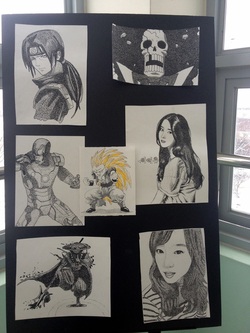 School technically ended for the term on Friday and concluded with the school festival. I say "technically" because though the students are on break from now until classes officially restart in early February they are strongly pressured to attend extra classes all throughout the month of January. The school festival was a school-wide event that permitted the boys to show off their art work, class projects and in the evening performance skills. I was asked to judge the Middle School pop song contest along with the Middle School vice principal and a guest judge. Each class of boys picked a song in English, created choreography and dressed in costumes and performed it in front of their peers. The winning classes got to perform at the evening festival which was open to parents and students from neighboring schools. During the festival I was surprised how talented many of my students were - they could sing, dance, play instruments and two can even beat box. The video below is excerpts from the festival - one of the microphones malfunctioned during the evening so some of the singing sounds a bit off. All of the students who performed are in my classes - the final two performances - the beat boxing and the boys singing with the guitar are in my night classes as well. 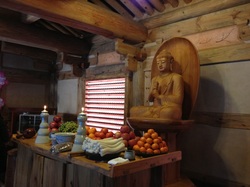 Last Friday the teachers gathered together for a dinner to celebrate the acceptance of a student into Seoul National University (the equivalence of an ivy league school here in Korea). Afterwards, Ms. Oh gave me a ride back to Jeomchon and invited me to go somewhere with her on Sunday though due to a language barrier I was unsure exactly where. However, I agreed since I thought it would probably be interesting experience since Ms. Oh herself is an intriguing woman. She is a self-described "jet setter" who has traveled throughout Europe and Asian countries such as Mongolia and Nepal and has done volunteer work in India. Promptly at 10am Ms. Oh picked me up at my apartment and by communicating through a smattering of English, a bit of Korean and the translation app on her smart phone she explained we were first stopping at her husband's parents' home before going to a Buddhist temple for the winter solstice. The stop at her relative's house was a quick stop during which she dropped off a few goods before we continued onto the temple. The Buddhist temple, situated on a small mountain outside of Mungyeong-eup , consisted of a few basic brown buildings. They lacked the intricate and colorful designs of a typical Korean Buddhist temple and other fairly obvious Buddhist symbology such as swastikas and statues of the Buddha. After arriving we entered one of the buildings in which there was a basic wooden Buddha (pictured above). In front of the Buddha on an altar were plates of offerings - oranges, tomatoes, pomegranates and rice cakes. On either side of the Buddha were thin shelves filled with small lotus shaped lamps that changed colors.
Inside this simple room were a group of 30-40 people, most in their mid-to-late 40's and older who were seated on cushions on the floor facing the Buddha. A clean shaven Buddhist nun sat on a slightly elevated platform in her loose blue garb with a saffron colored clothe wrapped around her. She was chanting Buddhist sutras of which some of the parishioners joined her. For the next hour or so we listened to the chanting and at specific moments went through a bowing ritual which involved standing up with one's hands clasped in front of you, kneeling on the ground and then touching your head to the ground. After the nun completed chanting the sutras we listened to a short discourse on dharma in the upcoming year before they thanked members of the temple board and announced the new members for the upcoming year. Following this ceremony we went down to a clearing between a few small building in which food was being offered to the visitors. Ms. Oh explained that the red bean and rice porridge with which people filled their bowls was a traditional food for this festival. Other dishes included kimchi made at the temple (and therefore vegan), deuk (rice cake) and a small pancake type food filled with some sort of sweetened bean paste. We spent another hour or so at the temple walking around the temple grounds, warming up in one of the rooms reserved for meditation, briefly chatting with the nun who gave me and other visitors a bracelet and enjoying a cup of pine tree tea before heading back to Jeomchon.  By now you might have an idea of why I haven't been updating my blog regularly - during the week I am busy with school and on weekends I try to get out and experience some of the things around me.
During the fall there seems to be a festival every weekend and so in mid-October I joined a local waygook-in and one of her co-workers and we took the bus out to Mungyeong for the local apple festival. Mungyeong is renown for its apples so every year at Mungyeong Saejae there's a small festival which mostly consists of local farmers selling their apples in addition to the usual food booths and random knick knacks. However, unlike other festivals which are held in towns with little to do the apple festival is at a local park which is a mural of colors in fall. The theme for the apple festival, for at least the past two years, has been Snow White, a bit strange since Snow White was poisoned by an apple. Perhaps the Korean version is different ...? Anyways, after wandering around the festival a bit we went to the small replica village in the park. The village is used periodically for TV dramas and when there is no filming you can pay a small fee and walk explore it. The sunny weather made for an enjoyable morning at the park and while leaving the festival I bought a big container of sweet delicious apples and have started to make and freeze apple sauce for the winter months when fruit is a bit more scarce and rather expensive.  In my last entry I mentioned how mundane I now find Korean festivals - they're pretty much all the same with only slight variations. However, there is one festival of which I truly have enjoyed myself during both visits is the annual lantern festival of Jinju. The the highlight of this fall festival is the hundreds of lanterns scattered throughout the river or along the riverbanks. I went to this festival with my friend Grant and we had a wonderful weekend walking around admiring the lanterns, enjoying some food (pa-jeon and dongdongju) before concluding the evening with a late night tarot reading. Below are a variety of photos I took at the festival which I believe will always be my favorite in Korea.  The first indication that a full year has passed is usually the repeat of special events. The first weekend after I arrived in Jeomchon I hopped on a bus with a few locals and headed to Andong, a nearby city for it's annual mask festival. A full year later I decided to venture back to Andong to experience the festival again. A lot has happened in a year and I would say I've been to a decent amount of festivals here in Korea. Though initially charmed with the mask festival (it was my first one here in Korea) I have since realized that most festivals in Korea have little variation. What was enjoyable a year ago now was a bit mundane.
Though I knew what to expect I decided to make the 2 1/2 hour round trip and explore the festival on my own. I headed there a bit early on the recommendation of my co-teacher to see one of the performances. However the entrance fee to the dance hall combined with the fact that it was a dance I had seen at the nearby Hahoe Village (included in the ~$2 entrance fee) persuaded me to skip the performance and instead walk around the festival. There were a few booths that had crafts, a variety that sold random goods (herbs, socks, pottery, etc) and some that had food. I walked around the festival trying to find something that would interest me but I wasn't drawn to anything. I watched a performance on the open stage - a local girls' school sang a few songs - and after that, I hopped into a taxi and headed to the bus station for a trip back to Jeomchon to start work on a lengthy to do-list I had planned for the weekend. I left a bit disappointed in myself because I lacked any real enthusiasm for the festival but I reminded myself that at least I had gone rather than spending the day at home. 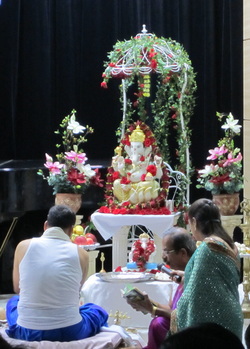 After a year in Korea I've finally found the information network for the local Indian community. It turns out that most Indians keep in touch via a facebook group. I requested to be added and now I am privy to the announcement for events such as Ganesh Chathurthi.
Ganesh, for those of you who don't know, is one of the most recognizable Hindu gods with his elephant head and body of a human. He's incredibly popular in Hinduism because he helps the devotee overcome obstacles so many Hindus pray to him before starting something new. Ganesh Chaturthi is an annual event that honors Lord Ganesh. Since my research has been with diasporic Hindu traditions and with the conclusion of my current job and the start of my new one I decided it would be auspicious to attend the event. I left quite early Sunday morning for Seoul and arrived at the beginning of the ritual. It was interesting to observe the puja (religious ritual) after spending so much time within an established Hindu community in the US. The man conducting the puja didn't seem to be a priest by trade and paused here or there to adjust things during the ceremony. After the puja was complete the rest of the morning and into early afternoon was filled with cultural events - mostly singing and dancing and the occasional discourse. The entire event was being hosted by the local Hare Krishna temple and this sponsorship was evident in the discourse given. One man called for people to share the Vedic culture with non-Hindus, a type of prostelyzation of which I had never heard before in a temple (or amongst Hindus). Another man spoke at length about how one might define religion and gave a very outdated perspective of how religion is understood within academia. It was an interesting event - one that I'm happy to have attended to have a better understanding how some Hindus continue to carry on their traditions and rituals in a country such as Korea. |
| Mindy in the City |
|
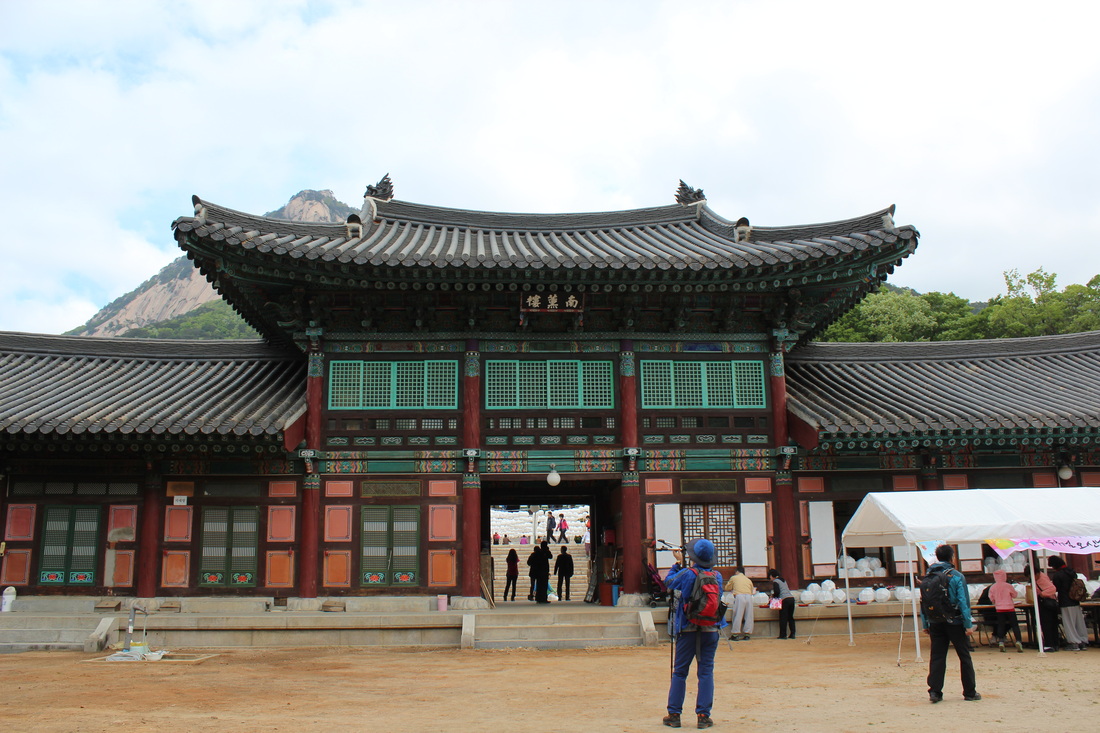
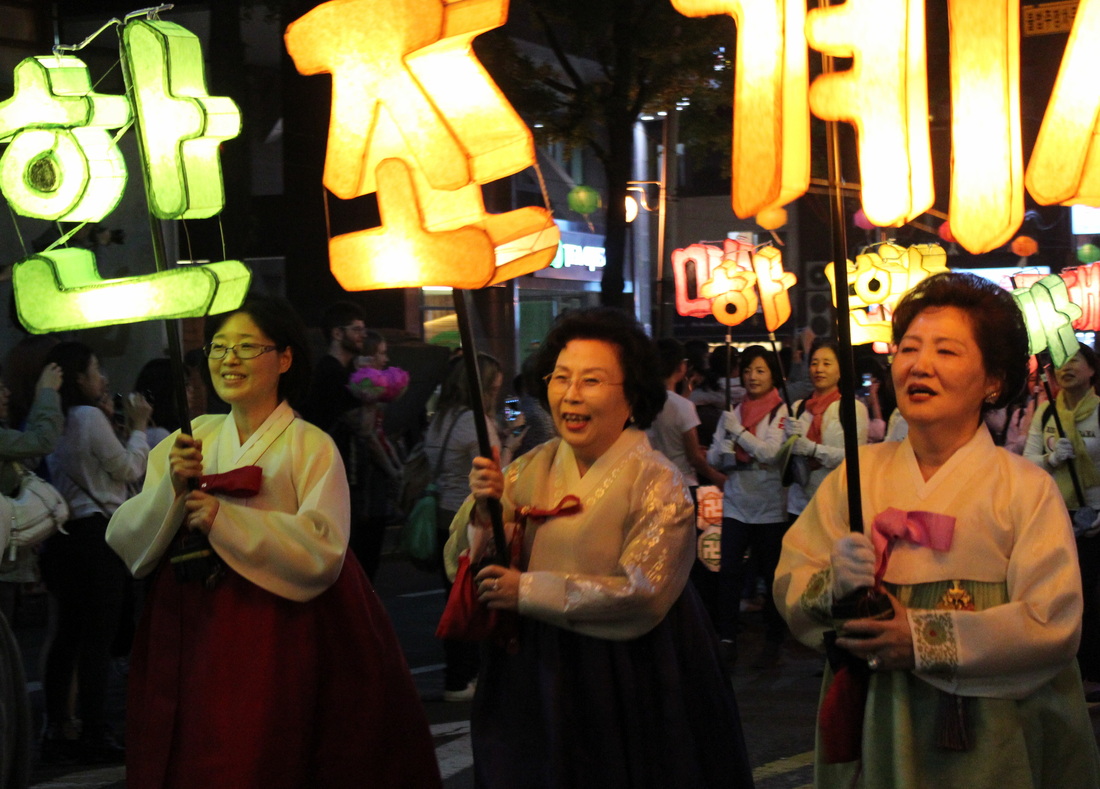



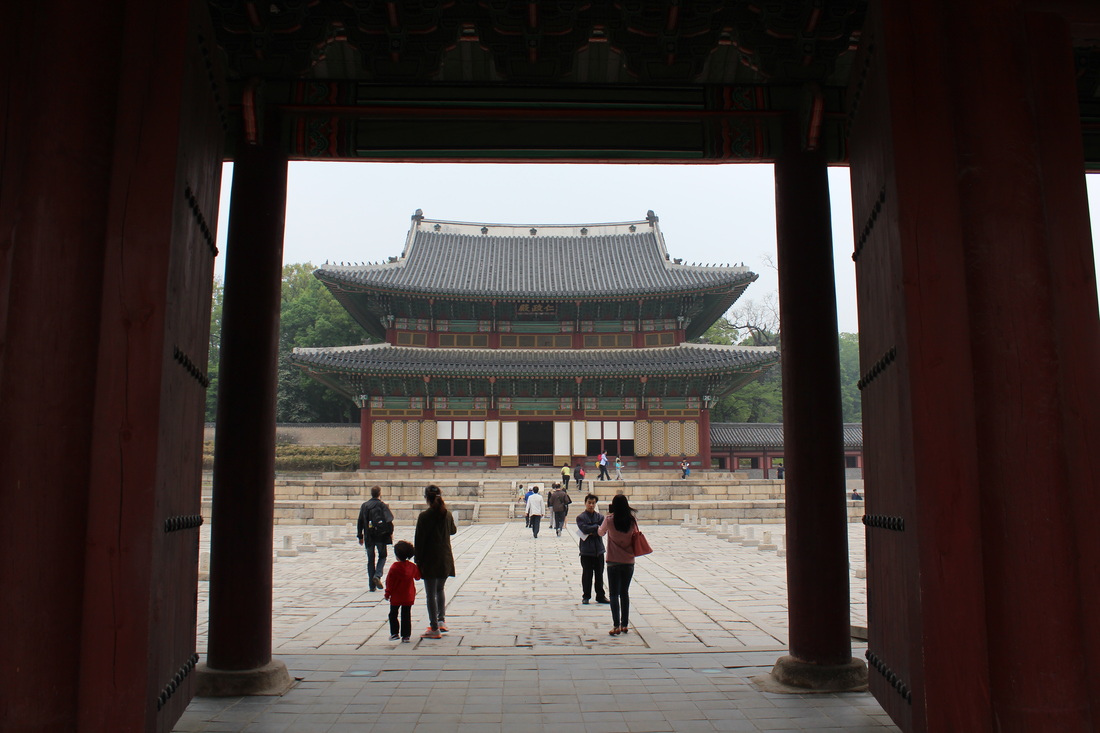




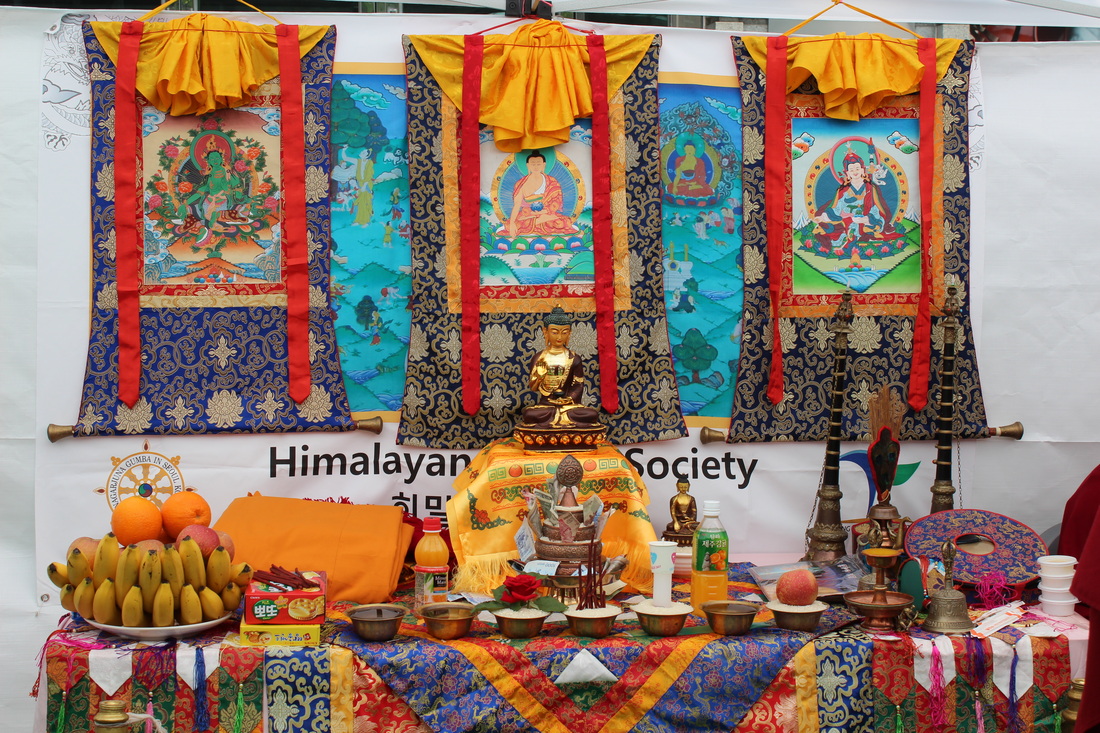
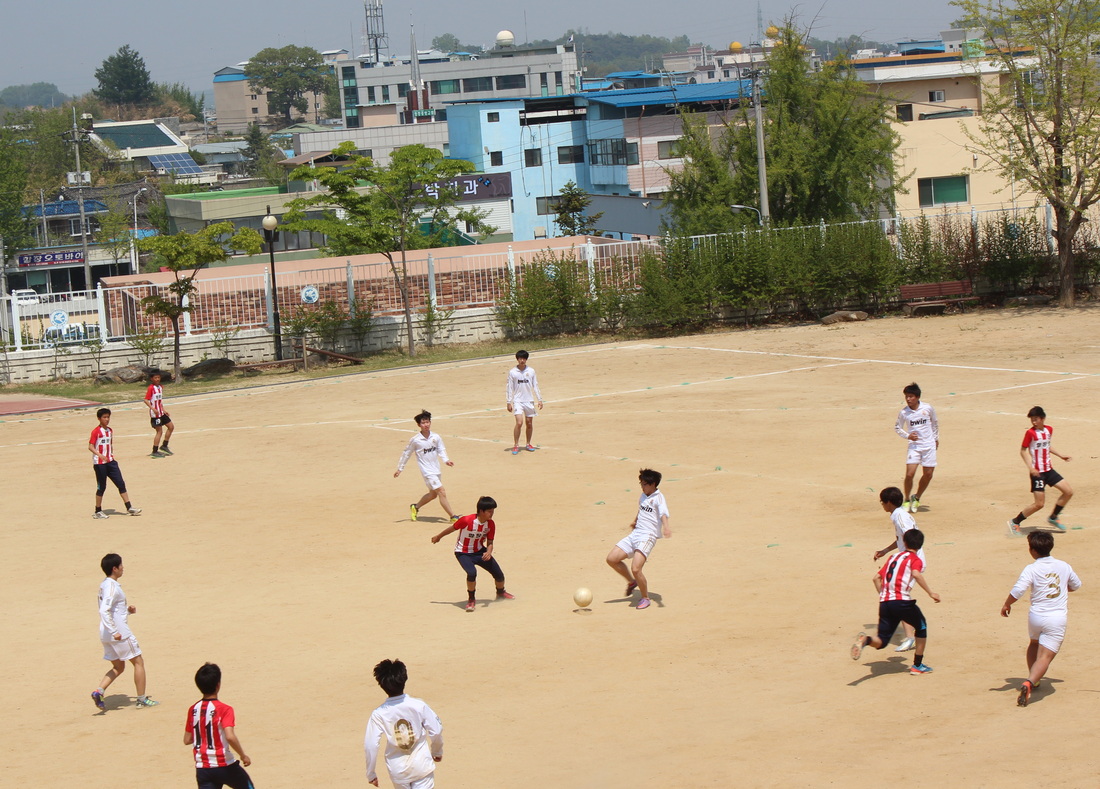
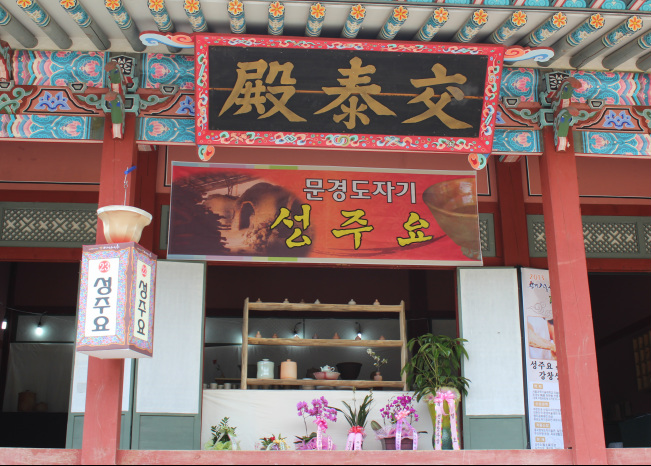
























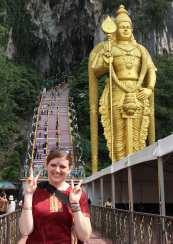
 RSS Feed
RSS Feed